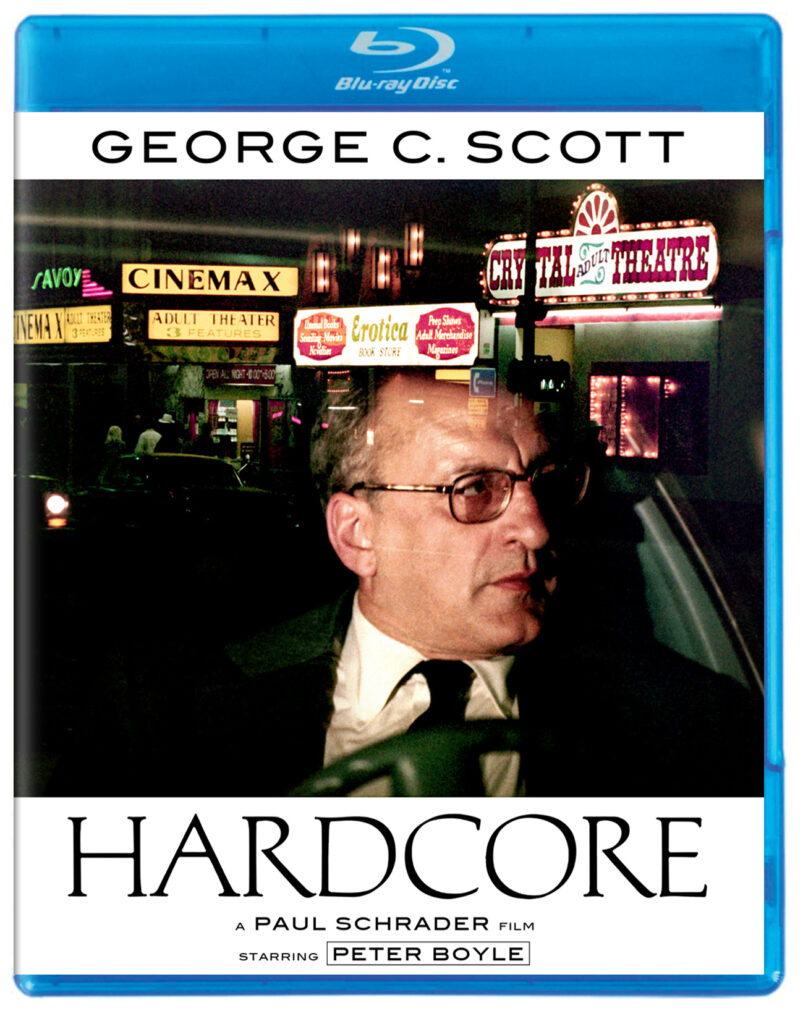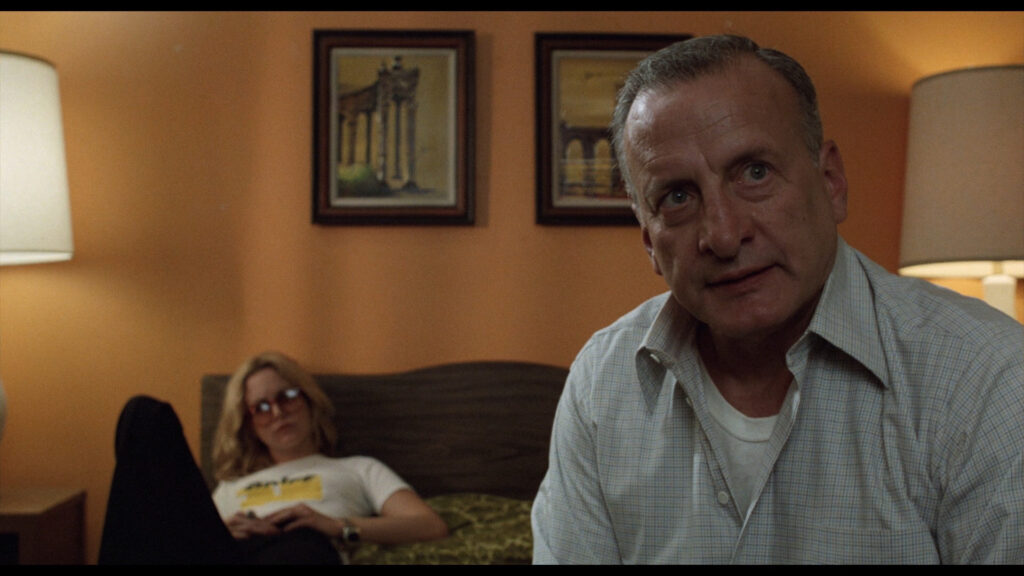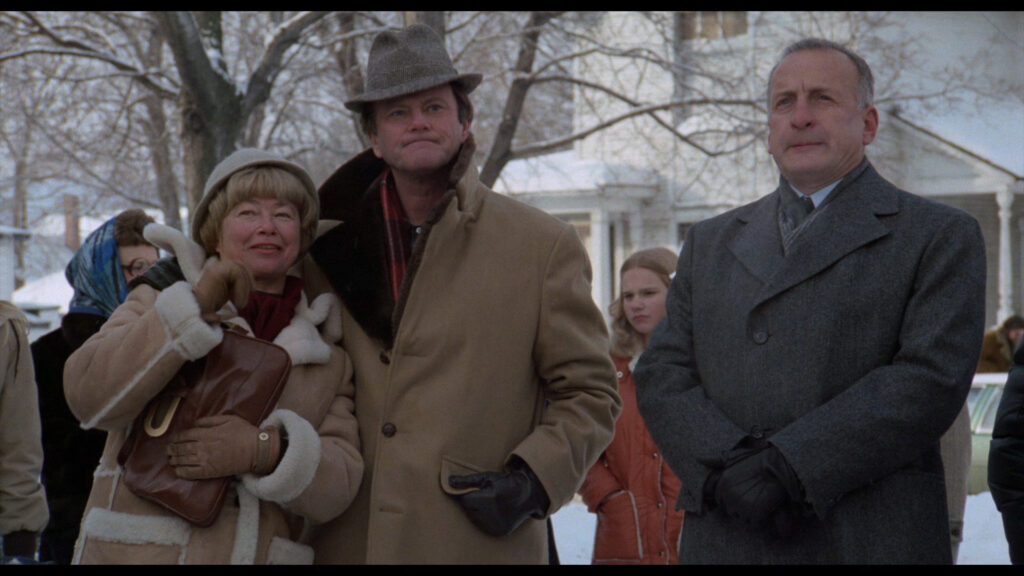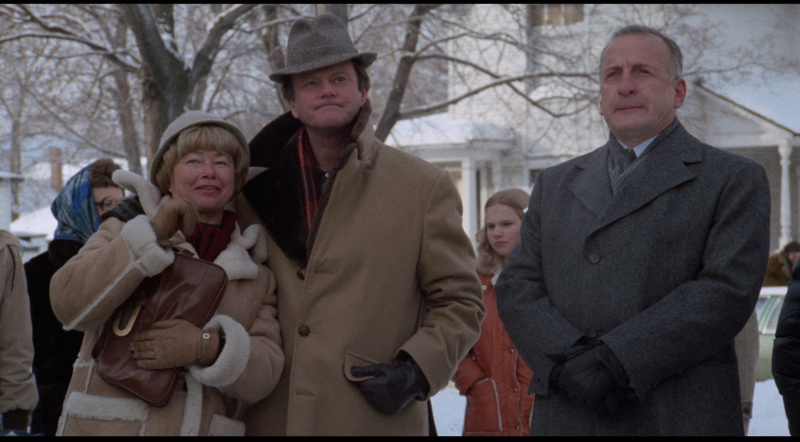The Dark Journey Of The Elect Through The Land Of Sunshine And Sex
DIRECTED BY PAUL SCHRADER
STREET DATE: AUGUST 22ND, 2023/KINO LORBER STUDIO CLASSICS

From Dutch Calvinist Grand Rapids, Michigan to Wild Western Los Angeles, Paul Schrader’s second film as writer-director, following Blue Collar (1978), and building on characters and themes earlier explored in his scripts for Taxi Driver (1976) and Rolling Thunder (1977), takes us from the Midwestern town of his birth and upbringing to the adopted city of his vocation and artistic expressivity. The unlikely point of connection? Pornography: which like the ecstatic visions of an Old Testament prophet is film-titled as unfiltered and raw here as any 8mm stag-loop, even if its actual presentation is still quite far from explicit.
Hardcore, title and film, is as difficult, frustrating, and unpleasant a viewing experience as its subject matter, however; while also strangely compelling for its very off-putting nature. Drawing us in even as it repels us, that strange push-and-pull is replicated by Schrader’s paternalistically upright church-deacon, played in alternately glowering and raging terms by George C. Scott, whose film-length descent into the underworld abyss of sex shops, peep shows, “rap parlors”, black market contraband, and bondage fetish houses again weirdly fascinates even as it effectively nauseates. Offering its own vivid view on a now forty-four-year-old social and artistic document is Kino Lorber Studio Classics’ deluxe re-issue of Hardcore on Blu-ray, the high-definition transfer, slipcover, reversible-image sleeve-art, and two separate commentaries inviting those interested in late 70s exploitation flicks and serious art house fare alike to take a closer look into its forbidden world.

Opening with steely greyscale establishing shots of a Midwestern winter, country singer Susan Raye sweetly crooning “Precious Memories” over the soundtrack, we are with the faded legend “Van Dorn Celery” adorning a solid wood frame homestead introduced to a family gathering after church. Impossible to tell (even on later viewings) who is related to whom, we nevertheless see the multi-generational dynamic broken down between the male elders’ serious theological discussions at the dinner table, the female helpmates busily preparing the meals in the hallway and kitchen, and the younger children permitted to silently observe in the background. The older children, by contrast, seem to be allowed a certain latitude to assert their own emerging identities apart from if still somewhat integrated into the family socializing sphere, and from there emerges a certain conversational buzz around an upcoming youth trip to a church in California.
By this point we have been following furniture factory owner Jake Van Dorn (Scott) through his strained interactions with family and work colleagues, leading a modest dinner prayer in about the same stentorian tones that he addresses a promotional consultant on a too-vivid blue-shade of “pavonine”, and it perhaps emerges as no great surprise that his sixteen-year-old daughter has disappeared out in California during a church outing to a fairground. What comes as a greater surprise, though, is after Van Dorn and his brother-in-law (Dick Sargent) travel to Los Angeles, get nowhere with the police, and hire a slightly seedy private detective (Peter Boyle) to track the missing girl down, that the PI should eventually return to what passes for a red lights district in Grand Rapids with a silent reel of an explicit 8mm film titled “Slave of Love”. Confronting Van Dorn with the grainy-filmed evidence of his underaged daughter sexually performing with two older males, the church-elder and single-father’s distraught emotional reaction to previously unthought of depravity precipitates his own longer journey to the land of sunshine and sex.
From LA down to San Diego, a dark rumor from Tijuana, Mexico eventually sending him up to San Francisco, Van Dorn, variously posing as a hilariously unconvincing porn producer, eventually hires and receives guidance from a jill-of-all sex-trades named Niki (Susan Hubley), who acts as Venusian Virgil to his doctrinal Dante through the netherworlds of neon-drenched adult entertainment. Ending where it began, with sweet Susan Raye again crooning “Precious Memories”, the nightscene of blaring signs and flashing police-lights portends a greater experience of the world this pilgrim and his progeny may have a difficult time coming home from.

The again cold, austere views of family, church, and honest work gradually giving way to overheated, charged tableau of lurid billboards, dancing striptease, and writhing flesh, the connections between the paler hues of an over-idealized, 1950s-like Americana, as contrasted with the sick greens, bilious beiges, and especially blood reds of 1970s-realized psychedelia, are not so much visual as emotional. A literal slow-burn of a latter-day Western drama, with an initially upright pilgrim’s very deliberate and drawn-out descent into the libidinous pagan-hell of his nightmares, Hardcore is nevertheless unified from stark beginning to violent end by a key discomfort that pervades and suffuses both apparently separate spheres. As composer Jack Nitzsche’s church-organ music subtly switches to a minor key, and as cinematographer Michael Chapman’s monochrome compositions add gradually warmer colored gel-tones, the full audio-visual effect has become apparent by the time George C. Scott, in a garish top-unbuttoned floral shirt, stalks down a dungeon-like hallway resembling a pulsating vein, moving in unsynchronized time to a now full-blown electronic-synthesizer score.
But curiously without the emotional temperature having noticeably raised or lowered by Scott’s Van Dorn’s movement between worlds. Hard and terse in the film’s first hour, bottled up or raging in the next, even trading his tailored wardrobe for a tie-dyed and tight-jeaned disguise; whether as Calvinist or libertine the violence lurking behind both facades variously erupts with him smashing a table-lamp through the face of a strung-out junkie, quite savagely slapping out some withheld information from Niki, or repeatedly slamming a pimp’s head against a downhill streetlamp towards the conclusion. In viewing, what comes as a greater shock to these violently mounting acts – the climax/resolution even preceded by Van Dorn literally ripping apart a flimsy multi-chamber S&M lair – is just how unsurprising they appear in dramatic context, seeming instead like the natural expression of his character, and therefore an almost preordained extension of the story.

Far from identifying with the character or his actions, one might argue that the ultimately distancing effect of the style and narrative creates a resistance in the viewer to both Van Dorn and his dark journey, objectively observing as opposed to subjectively experiencing his curiously emotionless plight. It’s that cold and ruthless center to his character that oddly fascinates, and one that adds both prelude and postscript to his self-elected role as rescuer and savior. One in which the bastard he was anticipates the bastard he’ll remain; and, past the story’s ostensible resolution, one in which his daughter will most likely run away again first chance she gets.
Being a particularly difficult film to either criticize or praise, first for its subject matter and second for the ambivalence of its main character, whether one sees Van Dorn as protagonist or anti-hero may say a lot about the complexity or confusion of this work. But however one views it, Hardcore remains fascinating as an important social and artistic evocation of its peculiar cultural moment. (Where, parenthetically and contemporaneously, we first see a Star Wars [1977] calendar in the daughter’s bedroom, later an SW billboard outside Van Dorn’s LA motel room, and finally a topless striptease reenactment of the film’s famed lightsaber duel between Darth Vader and Obi-wan Kenobi, complete with cape, disrobed robes, and mask. Besides showing how the sex industry is always keen to capitalize on any contemporary pop cultural currency, its persistent inclusion also for better or worse dates some of the film’s more unsavory references from bottom-feeding exploitation fare to mass audiences also embracing a galaxy far far away…)
But, interestingly, not for its writer-director Paul Schrader, who in the 2016-recorded commentary included on KLSC’s Blu-ray, originally recorded for Twilight Time’s earlier release, spends a personally “painful” hour-and-forty-five minutes decrying two key artistic compromises that for him scuttled the relative success of the work. First the re-written ending, and second the casting of Season Hubley as Niki, both at the behest of the producers, and in general his acute discomfort some forty years later with the lighting, writing, and pacing. Listeners may disagree with aspects of his evaluation of Hardcore as a “sophomore” effort, even as it was his second film. (I personally think Hubley for one gives a fearless yet vulnerable, effectively realistic performance as a grown-up version of the child-prostitute played by Jodie Foster in Taxi Driver.) But it is an undeniably compelling track, and his numerous stories about the on- and off-set methods (and behavior) of star George C. Scott are everything you’d hope they’d be from this notoriously difficult personality and performer.
Also included from the previous Twilight Time Blu-ray is a more analytical track from Cinema Retro contributors Eddy Friedfeld, Lee Pfeiffer, and Paul Scrabo, which has both the strengths and weaknesses of the multi-voice commentary. While the historical context of the film is well established in the discussion, the commentary does tend to veer off occasionally on a non-relevant anecdote or random point of trivia, say, before being pulled back to more pertinent subject matter. (Necessitating at least two awkwardly injected post-recording edits first on Paul Schrader’s previous film Blue Collar [1978] and second on the career of Season Hubley.) The discussion is otherwise valuable for its considerable insights, especially their brilliant observation on the term “hardcore” as referring to both explicit sex and dogmatic faith, and in particular dovetails nicely with Schrader’s explanation of the massive edifice of logic and intellectualism that Protestant reformer John Calvin constructed, as being wholly subsumed (and subverted) by a perfectly described “peephole of faith”.
Because contrary to conservative evangelical pundit Jerry Falwell’s later recursive definition of pornography as, famously, something he “knows… when [he] sees”, no two people are likely to see, or feel, precisely the same thing, and larger questions of belief or sexuality ultimately wither beneath the all-consuming gaze of personal experience and subjectivity. Which in terms of film-viewing extends specifically to what we see and how we see it; as one might illustrate by a comparison of two distinct views of the same image. (Top: TWILIGHT TIME; Bottom: INDICATOR)


KLSC’s presentation of Hardcore in these terms seems to lean towards Twilight Time’s limited edition release from 2016, which in addition to the two mentioned commentary tracks appears to take its visual cue from the subtly warmer and more tonally shaded images of that previous transfer. However, a more washed-out, less sculpted grading might from another point of view be equally valid – the sharper tones mirroring the character’s stark view of the world – so, again, individual preference may vary. Faith and desire, like the movies, remains in the eye or experience of the beholder.
The images used in this review are credited to DVDBeaver and, taken from previous Blu-ray releases, are not meant to represent the image quality of Kino Lorber Studio Classics’ Blu-ray of Hardcore.

